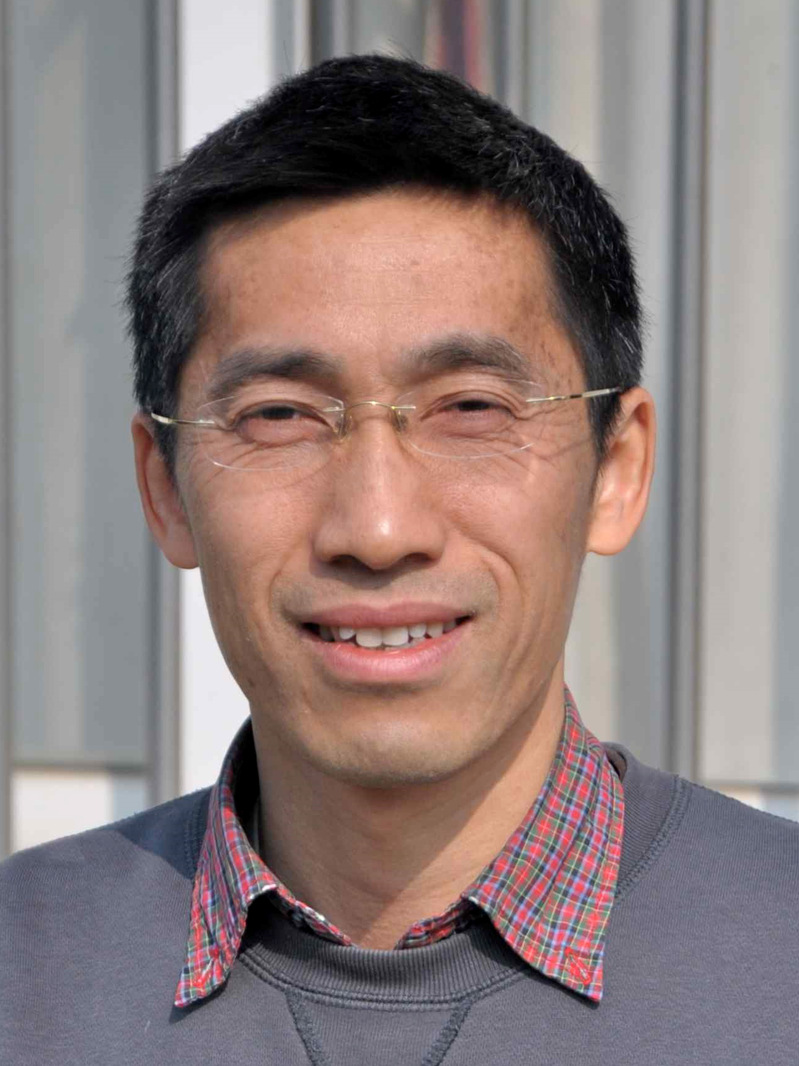
教师基本信息
姓名:黄强
职称:教授
职务:教师
电子邮箱:huangqiang@fudan.edu.cn
办公地点:G607室
办公电话:021-31246589
研究方向
生物大分子设计与优化、基因编辑系统的机理与调控、蛋白质人工智能设计技术。
个人简介
1991年从浙江大学化学系本科毕业,获得化学专业学士学位。随后,于1994年和1998年分别在浙江大学获得物理化学专业的硕士和博士学位。1999至2000年间,在德国柏林洪堡大学生物系分子生物物理专业从事博士后研究,并于2001至2003年间继续在该系及台湾中山大学化学系进行研究。2004年12月进入复旦大学生命科学学院工作,主要开展生物分子结构与相互作用的理论建模、计算模拟和分子设计等前沿研究。自2005年起,历任副教授、教授,并担任博士生导师。
近年来,其课题组专注于结合分子结构模拟、人工智能计算与基因工程实验,进行蛋白质设计与优化的研究,是国内少数深度融合蛋白质计算设计与基因工程实验研究的团队之一。已在J. Am. Chem. Soc., Nature Commun., Biosens. Bioelectron., Protein Cell, J. Nanobiotech.和Bioinformatics等知名期刊上发表了近90篇学术论文,获得了近20项授权发明专利,曾获得第五届中国技术市场协会金桥奖(第二完成人), 教育部技术发明奖二等奖(第三完成人)和上海市科技发明奖二等奖 (第三完成人)。
授课情况
生物技术专业课《物理化学》、生物学专业进阶课《计算结构生物学》。
招生专业
生物信息学、遗传学
1. Q. Qin, X. Jiang, L. Huo, J. Qian, H. Yu, H. Zhu, W. Du, Y. Cao, X. Zhang, Q. Huang*. Computational design and engineering of self-assembling multivalent microproteins with therapeutic potential against SARS-CoV-2. Journal of Nanobiotechnology. 22:58 (2024). https://doi.org/10.1186/s12951-024-02329-3.
2. X. Jiang, Q. Qin, H. Zhu, J. Qian, Q. Huang*. Structure-guided design of a trivalent nanobody cluster targeting SARS-CoV-2 spike protein. International Journal of Biological Macromolecules, 256:128191 (2024). https://doi.org/10.1016/j.ijbiomac.2023.128191.
3. M. Song, Y. Li, R. Gao, J. Liu, Q. Huang*. De novo design of DNA aptamers that target okadaic acid (OA) by docking-then-assembling of single nucleotides.Biosensors & Bioelectronics, 215:114562 (2022). https://doi.org/10.1016/j.bios.2022.114562.
4. R. Yao, J. Qian, Q. Huang*. Deep-learning with synthetic data enables automated picking of cryo-EM particle images of biological macromolecules. Bioinformatics, 36:1252-1259 (2020). https://doi.org/10.1093/bioinformatics/btz728.
5. Q. Liu, A. Herrmann, Q. Huang*. Surface binding energy landscapes affect phosphodiesterase isoform-specific inhibitor selectivity. Computational & Structural Biotechnology Journal,17:101-109 (2019). https://doi.org/10.1016/j.csbj.2018.11.009.
6. C. Huai#, G. Li#, R. Yao, Y. Zhang, M. Cao, L. Kong, C. Jia, H. Yuan, H. Chen, D. Lu*, Q. Huang*. Structural insights into DNA cleavage activation of CRISPR-Cas9 system. Nature Communications, 8:1375 (2017). https://doi.org/10.1038/s41467-017-01496-2.
7. J. Zhu, Q. Yang, D. Dai, Q. Huang*. X-ray crystal structure of phosphodiesterase 2 in complex with a highly selective, nanomolar inhibitor reveals a binding-induced pocket important for selectivity. Journal of the American Chemical Society, 135: 11708-11711 (2013). https://doi.org/10.1021/ja404449g.
8. Q. Huang*, A. Herrmann. Calculating pH-dependent free energy of proteins by using Monte Carlo protonation probabilities of ionizable residues. Protein & Cell, 3:230-238 (2012). https://doi.org/10.1007/s13238-012-2035-4.
9. Q. Huang, C.- L. Chen, A. Herrmann. Bilayer conformation of fusion peptide of influenza virus hemagglutinin: a molecular dynamics simulation study. Biophysical Journal, 87:14-22 (2004). https://doi.org/10.1529/biophysj.103.024562.
10. Q. Huang, R. Opitz, E.-W. Knapp, A. Herrmann. Protonation and stability of the globular domain of influenza virus hemagglutinin. Biophysical Journal, 82:1050-1058 (2002). https://doi.org/10.1016/S0006-3495(02)75464-7.

